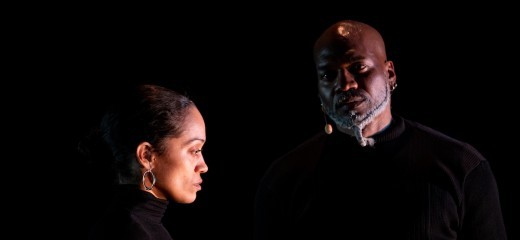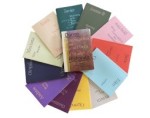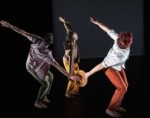
Love and Fight
by Emilee Lord
All the way upstage, in a line, stands a piano, a saxophone, an upright bass, and a drum kit. Four jazz musicians enter and begin to play an intro to Raphael Xavier's The Musician and The Mover, presented at New York Live Arts. From there, a story emerges–non-linear in nature, punctuated with poetry, and highlighting the freestyle quality of both jazz and breakdance.
Xavier (pronounced ZAH-vee-ay) has been break dancing for nearly 40 years. He curates breaking alongside jazz and poetry. Rearranging commonly understood breakdance moves or sequences, he takes apart the form, slows it down, recontextualizes it. Rather than reinvent the wheel, he has taken the time to master it and then pull it into pieces. His freestyle has a fresh yet studied quality; it's so well understood by this practitioner.
At the start of the piece, Xavier appears in a spotlight with dancers Martha Bernabel and Joshua Culbreath. He speaks about form and process: “The musician and The mover Who Arrange both tone and rhythm in color … A Prolific ability to build from the ground up and change the rules and moods to mode To change the tone, change the chord, change the movement to define the age of America….” He starts moving with the simple gesture of using a mortar and pestle. The gesture gets larger and begins to move him through the space, morphing into a solo, turning on itself, and speeding up into the crossing feet, poses, and pivots of breakdance.
The piece moves between Xavier speaking, solos from the dancers, and moments of unison. Each dancer brings their own energy to the space. Culbreath flies tilt-a-whirl-like into and out of the light, playing with gravity, speed, and inversions. Bernabel has a softer quality and a solid but quiet sensibility in the form. And Xavier shows us the history of a style in the body. His solo near the end of the piece makes this very clear as he spirals on the floor, moving between different shapes and balances.
The dancers move and carry a collection of boxes throughout the piece, representing an artist's (or maybe anyone's) headspace. And the boxes are often shifted with a sense of great effort, the dancers playing at being exhausted with the weight. A lot of the work seems to be about the fight to create work.
There were sections that I read as the struggle of people of color and the history of that struggle. In the “Stay Late” conversation moderated by Bill T. Jones, Xavier said those sections were more about the difficulty of an artist of color–particularly a breakdancer–to make it, to be seen, to be authentic.
A theme of boxing emerged through the piece. These sections balanced mimicry of boxing, breaking, unison choreography, and places where the dancers grooved to the music for a moment, just enjoying being there. While the unison sections lacked confidence and certainty, feeling forced and unsure, the dancers' bodies invoked play in their solos and freestyles.
There was riff and play in the movement and the music. The seasoned improvisational musicians (Richard Hill, Kimpedro Rodriguez, Sumi Tonooka, Bobby Zankel) watched and responded to what unfolded in front of them. It was curious to sense that the music had been more heavily composed, even with the premise that these two forms–breaking and jazz–worked together because of the inherent freestyle. Each dancer paired with a particular instrument as if to pull the musicians into the space with them. They seemed to embody each instrument, and I began to expect this pairing throughout.
For me, this was a piece about labor. Labor of love, the labor of art-making, labor of thoughts, labor of "making it," the labor of cleaning out your headspace. This theme also manifested in the labor of mastery, the labor of craftsmanship, and onstage, the freestyle inherent to both forms is a labor of play and joy and curiosity.
Did Xavier intend to talk about artistry, jazz, breaking, race, or himself? Was it all of this at once? The artist packed a lot into 50 minutes and I could not always follow the thread. Some of the work only became clear through the “Stay Late” conversation, and while I was happy to be there, I wished some clarity had been built into the work.
Raphael Xavier said, during one of his solos, "So I laid back and took the music in, and quivered with the fight, quivered with the love for life…." And I believe him. The love and fight, while sometimes muddy in their intentions, are certainly abundant.
The Musician and The Mover, Raphael Xavier, New York Live Arts, March 3-5
By Emilee Lord
March 15, 2022









